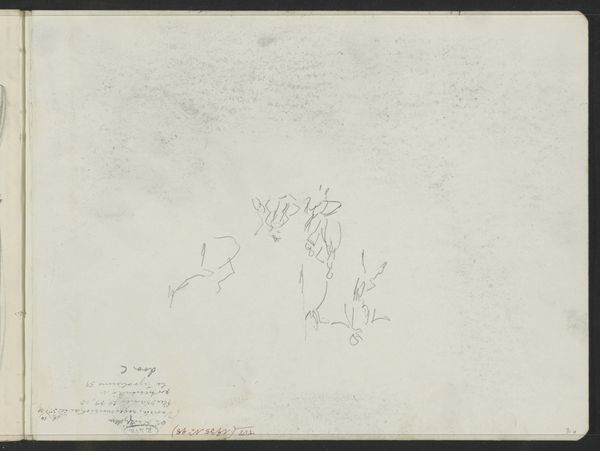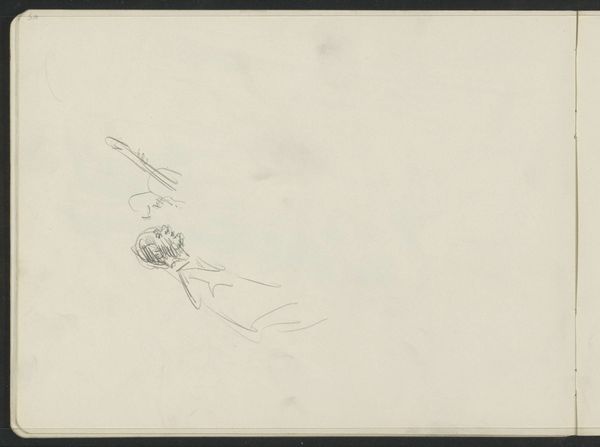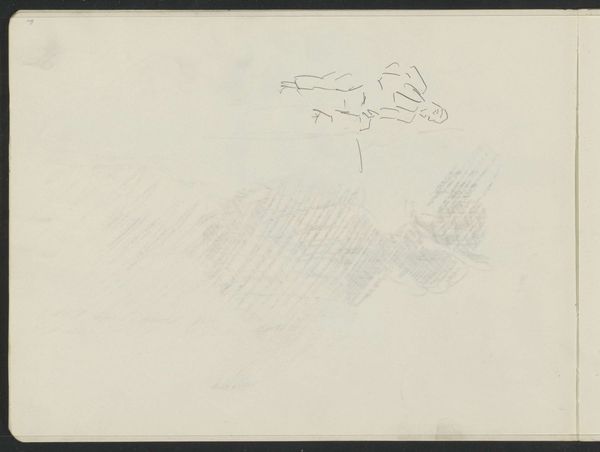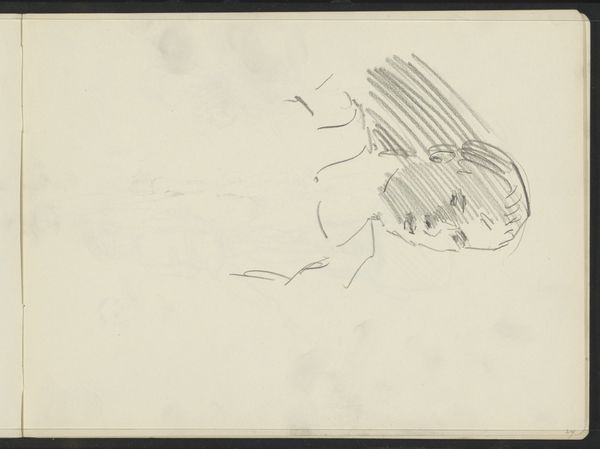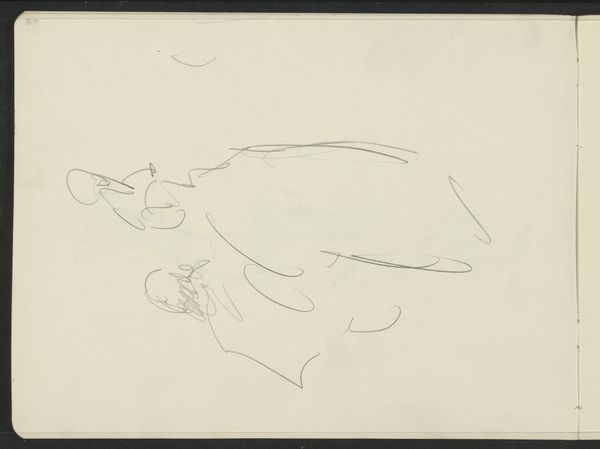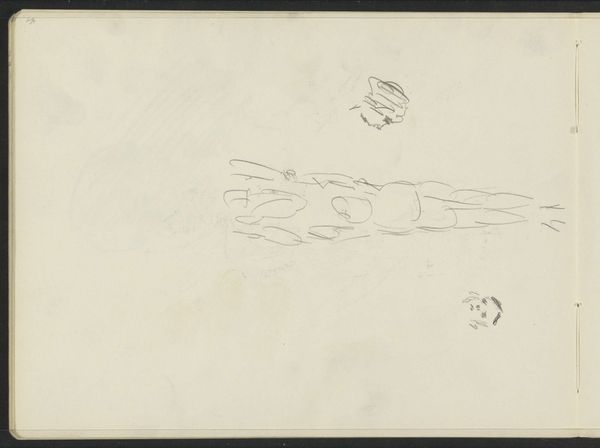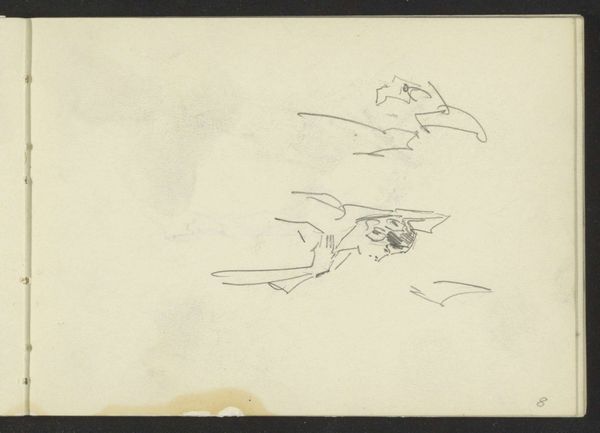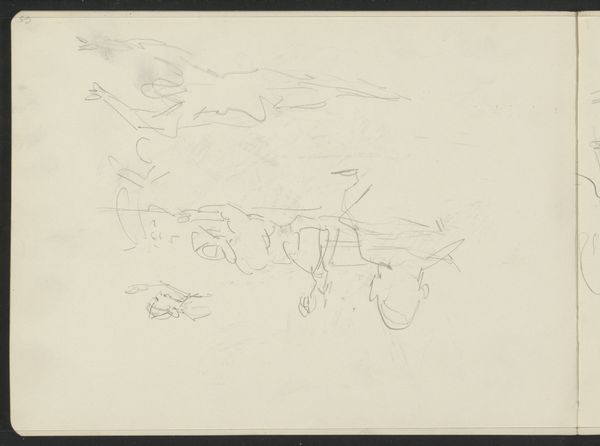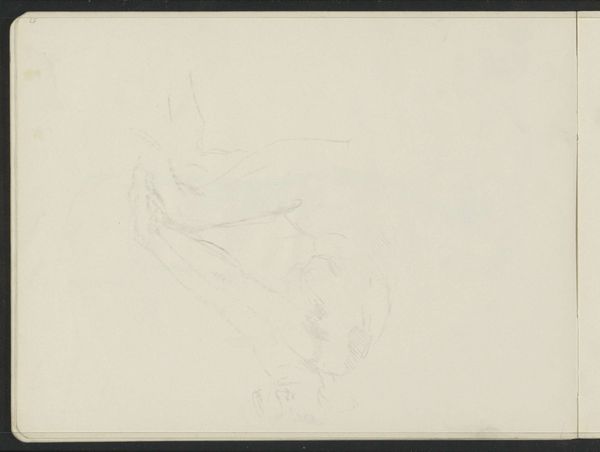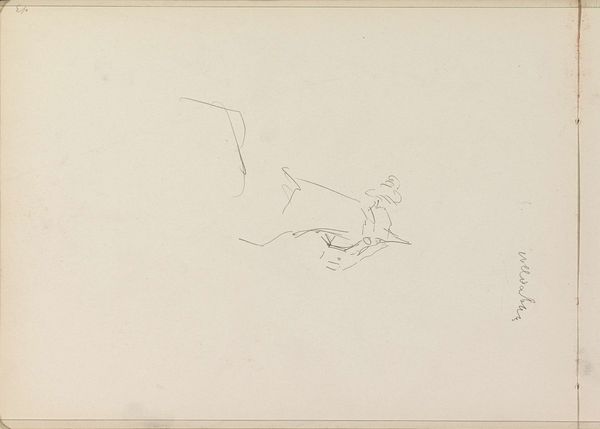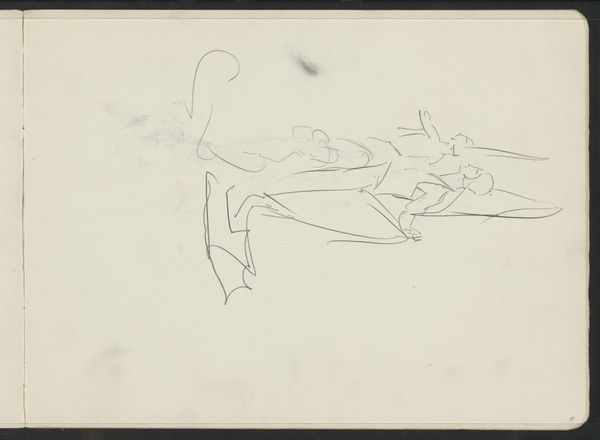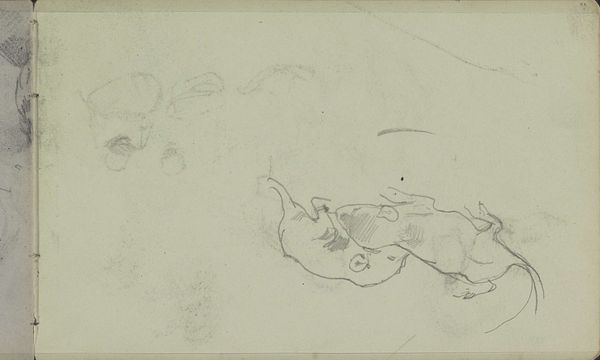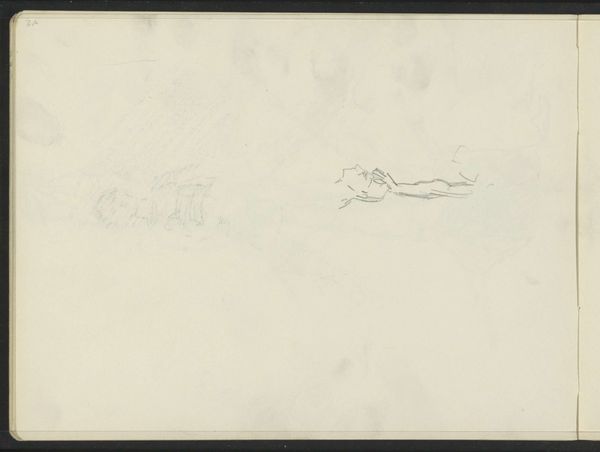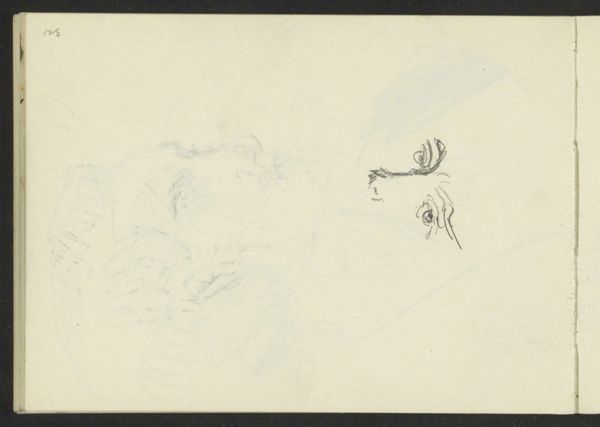
Copyright: Rijks Museum: Open Domain
Editor: Here we have Isaac Israels’ "Figuurstudies," dating from around 1915 to 1925. It’s a pencil drawing on paper, housed here at the Rijksmuseum. It’s… surprisingly minimal. Just these very light sketches of figures. What do you make of it? Curator: What strikes me is how evocative these seemingly simple lines are. The immediacy! There’s a rawness, wouldn't you agree? A feeling that Israels captured fleeting moments. What figures or ideas emerge for you when viewing them? Editor: I guess… suggestions of movement? One figure looks almost like they're dancing, and another perhaps reclining? It feels so spontaneous, which is typical of Impressionism I believe. But is there more to it than just capturing a quick impression? Curator: Absolutely! Think about the psychological weight of a sketch. Israels isn't just depicting bodies, but mapping forms from life, a symbolic dance between observation and representation. Doesn't it prompt you to think about gesture? How posture communicates intent? Consider how often we use posture in symbolic form! Editor: So, are you saying these figures, even in their unfinished state, are acting almost as symbols of different actions, and, also of Israels' state of mind? A sense of constant looking? Curator: Precisely! The sketchbook becomes a repository of cultural memory as he seeks to understand. Israels is engaging with a visual language that transcends realism, creating a vocabulary of form that still resonates today. Editor: I hadn’t thought about the link between the action and a language that connects time and form. This changes everything! Thank you! Curator: And thank you! Looking at this drawing alongside you revealed even more about how we all connect through imagery.
Comments
No comments
Be the first to comment and join the conversation on the ultimate creative platform.
